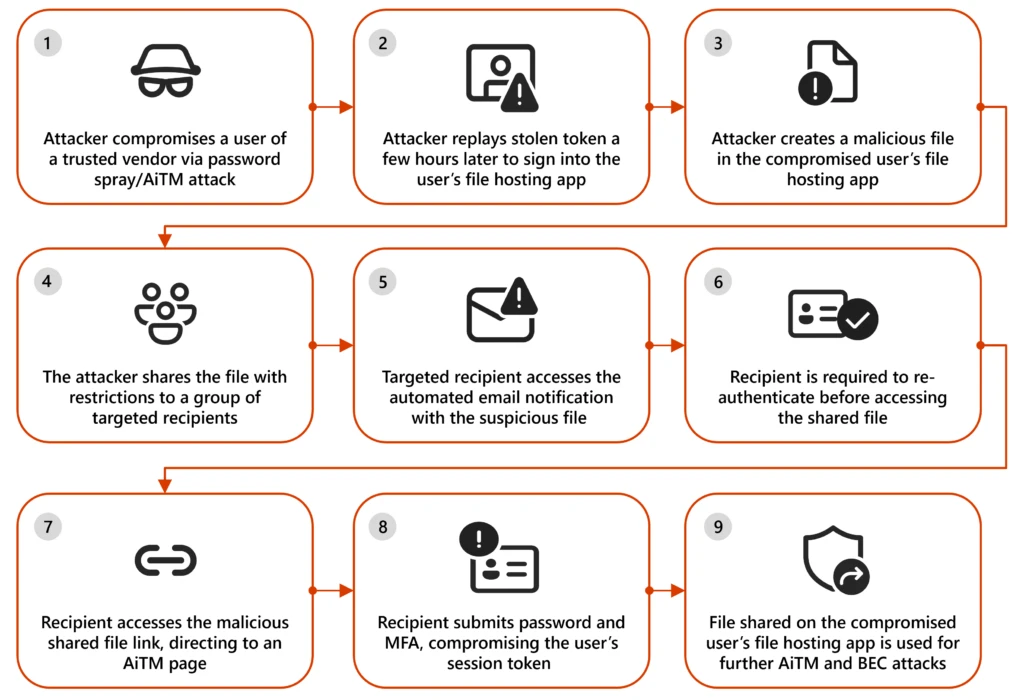Gandalf_The_Grey
Level 82
Thread author
Verified
Honorary Member
Top Poster
Content Creator
Well-known
- Apr 24, 2016
- 7,189
Microsoft has observed campaigns misusing legitimate file hosting services increasingly use defense evasion tactics involving files with restricted access and view-only restrictions. While these campaigns are generic and opportunistic in nature, they involve sophisticated techniques to perform social engineering, evade detection, and expand threat actor reach to other accounts and tenants. These campaigns are intended to compromise identities and devices, and most commonly lead to business email compromise (BEC) attacks to propagate campaigns, among other impacts such as financial fraud, data exfiltration, and lateral movement to endpoints.
Legitimate hosting services, such as SharePoint, OneDrive, and Dropbox, are widely used by organizations for storing, sharing, and collaborating on files. However, the widespread use of such services also makes them attractive targets for threat actors, who exploit the trust and familiarity associated with these services to deliver malicious files and links, often avoiding detection by traditional security measures.
An example attack chain is provided below, depicting the updated defense evasion techniques being used across stages 4, 5, and 6:


File hosting services misused for identity phishing | Microsoft Security Blog
Since mid-April 2024, Microsoft has observed an increase in defense evasion tactics used in campaigns abusing file hosting services like SharePoint, OneDrive, and Dropbox. These campaigns use sophisticated techniques to perform social engineering, evade detection, and compromise identities, and...
